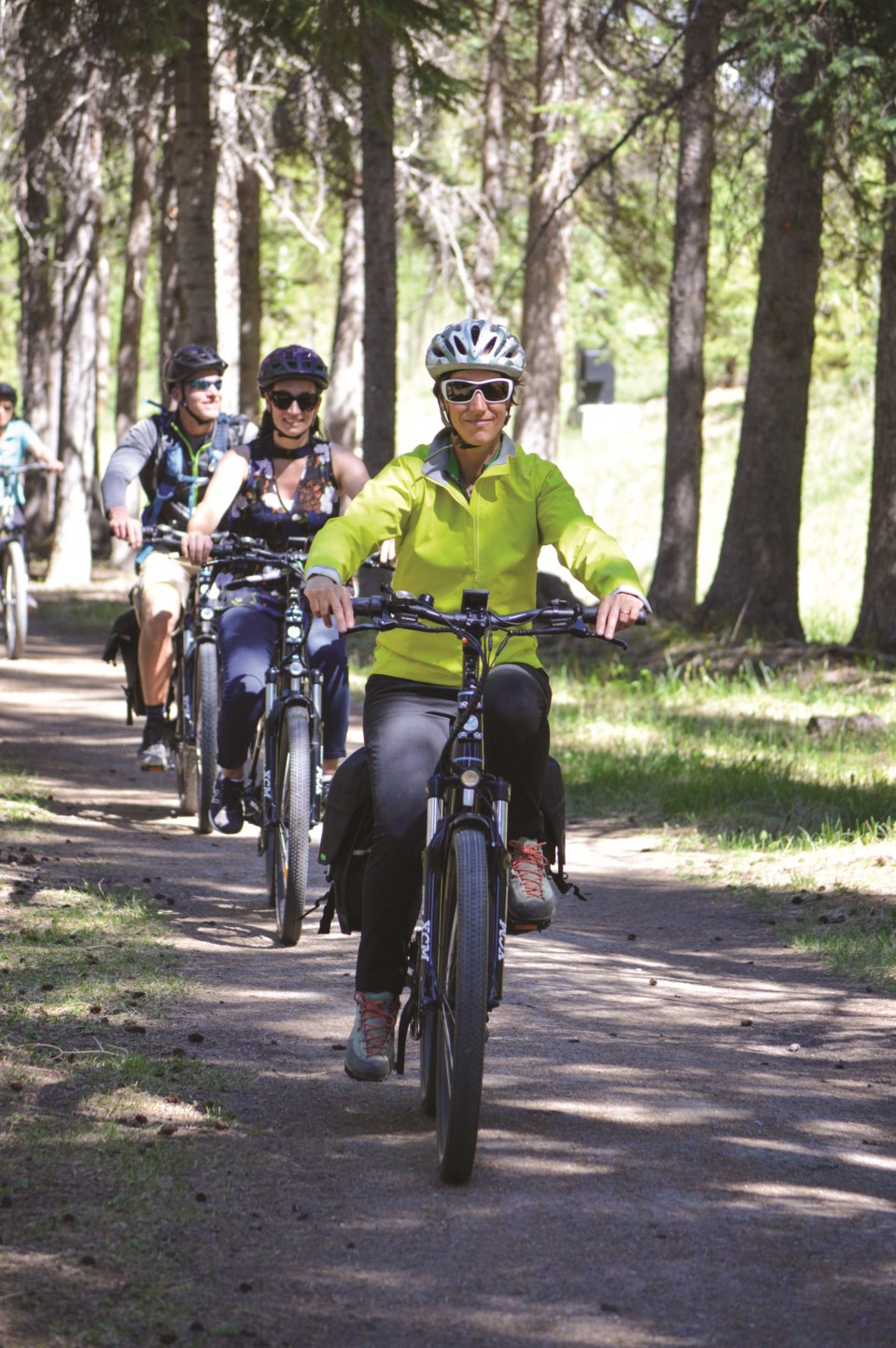BANFF – Council has applied the brakes on setting and enforcing speed limits for bicycles and e-bikes on trails in the Banff townsite for now.
However, council has asked administration to bring back a report outlining legal implications of non-enforcement on multi-use trails as well as to identify possible mitigation tactics to limit excessive speeds and other infractions from non-motorized vehicles and pedal electric bikes.
“We have changed our road speed to 30-km/h to make it safer for all vulnerable users on the road and we have a situation on our pathways that is similar,” said Coun. Chip Olver.
“We have adults, we have children, we have elderly using those pathways, and they’re more vulnerable to injury with a bike collision.”
Olver said she is leaning toward speed limits and enforcement, but is also OK looking at other potential mitigations.
“We all see bicycles when on the roadway with cars. You see them dodging in and out and not stopping at stop signs, and making quick turns, and being on the left of a vehicle and then shifting to the right of a vehicle, and I think that’s happening on our pathways also,” she said.
“I am not saying that all bicycle users do that, because I am sure we have many courteous and alert bicycle users who are yielding to pedestrians, but in the cases where we don’t, I think we need to be very active in enforcement.”
Concerns have been raised regarding the speed and use of e-bikes, bicycles and other non-motorized vehicles on bike trails in town, particularly the busy multi-use trail along the Bow River from the canoe docks to the Muskrat Street pedestrian bridge.
The trail runs directly through Central Park and intersects with the Nancy Pauw pedestrian bridge, contributing to the high level of use and congestion. E-bikes are also becoming a more common form of transportation in town, and are available for rent for people who do not own them.
The sign posted at the entrance to the Bow River trail at the intersection of Buffalo Street and Bow Avenue, and the sign posted on the trail near the Banff Avenue bridge indicate a speed limit of 5-km/h.
Stan Andronyk, municipal enforcement manager for the Town of Banff, said although many cyclists are able to ride their bikes as fast as e-bikes can travel, e-bikes provide the opportunity to get up speed easier, and some e-bikes exceed the speed allowed by the province and are throttle controlled.
He said although there does not appear to be any documented incidents involving injury reported to Banff RCMP, Banff’s fire department, EMS, or Banff’s municipal enforcement department, there have been numerous anecdotal stories of conflict involving bicycles and pedestrians.
“We do believe there’s conflict and different levels of conversations going on between pedestrians and cyclists… whether it’s high risk or a quick interaction, it’s hard to say, but there is conflict on our trails for sure,” he said.
Andronyk said there are limited signs on the trails and pathways about regulations, which included bylaws that give pedestrians the right of way over non-motorized vehicles.
He said the City of St. Albert recommends cyclists keep to the right of the pathway and yield to slower moving traffic – pedestrians, joggers and walkers, and to move off the trail for less mobile users, while the City of Calgary has a speed limit of 20 km/hr on multi-use trails, which is enforced via fines.
Andronyk said the Town of Banff is working to increase education, noting there are plans to provide clear regulations and trail use expectations through signage and other communication avenues rolling out next spring.
“We are making more efforts to educate and try to get that message out,” he said.
Mayor Corrie DiManno and Coun. Barb Pelham opposed the motion to look at other possible mitigation tactics to limit excessive bike speeds and other infractions, preferring the route of more education for now.
The mayor said she believed it was “overkill.”
“I was really pleased that we don’t have any documented incidents and that the speed limit we do have posted is 5-km/h and we are working towards having better messaging and education on trail use,” she said.
“I am running, I am biking, I am all over these pathways, and I think folks are pretty courteous. I think it’s really hard to enforce and signage your way out of common sense.”
But Olver said she believes there are conflicts even if there have been no official reports, saying it’s a safety issue.
“I’ve had some scares on that pathway and perhaps it’s because I feel vulnerable. I’ve had three joint replacements and I would have serious repercussions from a collision so I do feel nervous down there sometimes when it’s a busy time of day with bikes going by,” she said.
“I think of things personally like a speed limit, I think of enforcement or spot enforcement, I think of dismounting and walking… and I would be interested in what administration considers the high conflict areas on trails.”



